If you look around most gyms, seldom will you find the freeweight shoulder press station occupied by anyone typically other than musclebound freaks or strength athletes. Why don’t people do it anymore? The answer is simple, it’s not as attractive as machine options or even dumbbells. Who wants to balance a 7 foot long, 44-pound bar above their head? As a result, you’ll find that the Smith machine or other implements are much more popular. Although, that doesn’t mean freeweight shoulder presses are less effective or useful.
In this guide, we’ll discuss the awesome benefits of Smith machine seated overhead press, proper exercise form, variations, sets and reps, and more.
How To Do Smith Machine Seated Overhead Presses
The Smith seated overhead press is not difficult to learn and because the bar weighs less than a standard freeweight bar, it’s also much easier to test your form and do a few practice reps before starting a set.
Although it’s important to note that different Smith machines will vary in how much its bar weighs. You can find more information about Smith machine bar weights later on in this guide.
Below we’ve included step-by-step Smith overhead press exercise instructions.
Step 1: Getting set up
Depending on where you train there may or may not be a bench waiting for you at the Smith machine. If not, make sure to grab an adjustable one and pull it over. Then, push the Smith machine bar up high and out of the way but low enough to where you can sit on the bench, reach up and un-rack the bar to do a few practice reps.
Level Up Your Fitness: Join our 💪 strong community in Fitness Volt Newsletter. Get daily inspiration, expert-backed workouts, nutrition tips, the latest in strength sports, and the support you need to reach your goals. Subscribe for free!
Now set your bench to a high incline or roughly 70-degree angle so your body will be slightly reclined during the overhead press. This is so when you’re doing the movement, the bar will be able to pass your face without hitting it.
Then move the bench under the bar, sit down and do a few practice repetitions to make sure the bar has just enough room to pass your nose. However, you do not want there to be too much space.
Step 2: Perfecting your form
Barbell overhead presses are less forgiving than their less restricting counterparts aka dumbbells. That’s because you’re limited to one hand position (pronated overhand grip) which means you have to position yourself according to the bilateral nature of a barbell.
Typically, you want to use a wider than shoulder width grip but how wide will depend on someone’s height and arm length. We recommend doing a little experimenting with the empty bar to find what works best for you. Keep your elbows flared out but not too much. Your elbows should be in front of your shoulders but not directly in front of you. This is both to maximize your pressing ability and protect your shoulder joints.
Plant your feet flat on the ground to form a solid base, then puff your chest out and press your upper back into the bench. Engage your core muscles to stabilize your spine which is important for supporting the weight and protecting your lower back. Keep your head back and eyes forward.
Step 3: The press
Now that you’ve got steps 1-2 down, it’s time to execute!
- Use your deltoids and triceps to press the bar overhead but stop just short of full arm extension. Slowly lower your elbows a few inches below the nipples or until your upper arms are parallel to the ground, and repeat for the desired number of repetitions.
Here’s a great video tutorial on the Smith seated overhead press.
Common Mistakes
Form is one of those things that you must get right when it comes to properly executing Smith machine seated overhead presses. Otherwise you could find yourself in a very awkward position under the bar. Here are some things to remember…
Give yourself room but not too much
You will need to do a few extra steps to ensure a proper setup. You cannot bring the bar to where you want it so the bench must be placed in the right spot and reclined just enough. The bar should be able to just miss your nose but if it’s too far away from your body this is a terrible position for your shoulders.
Proper hand width
When it comes to barbell presses in general, many beginners especially don’t have enough training experience to understand safe and effective hand placement. If your hands are too close together you lose pressing strength. Move your hands too far apart and you face a similar issue plus your shoulders are in an unsafe position.
Ultimately, your body type will determine the right hand placement but you want to ensure a few things.
- You’re able to press with max strength
- There’s no shoulder pain or discomfort
- Your elbows are not directly in front of you or too far apart.
Too much range of motion
You do not need to bring the bar all the way down to your chest, in fact, it’s not necessary. When you drop your elbows too far down, it removes the tension from your deltoid muscles and allows them to rest at the bottom. When you lower the weight, your upper arms should be roughly parallel to the floor or slightly below.
Smith Seated Shoulder Press Benefits
What are the advantages of Incorporating Smith machine seated shoulder overhead presses?
Multi-joint compound lift
While the freeweight barbell overhead will always reign supreme as the most raw shoulder building exercise, using a Smith machine in its place will yield similar strength and hypertrophy gains. And out of the many machine variations, it’s the one that closest resembles its free moving counterpart.
That leads us to the next benefit…
Not a freeweight exercise
We know what you’re thinking, “that’s blasphemy”. But hear us out. Freeweights have their advantages but machines are just as effective in many areas. Freeweight presses are scarier and require much deeper focus to keep the bar level and moving in the right path. The Smith machine bar is attached to rails which causes it to move along a fixed path. Therefore, you don’t have to worry about anything other than proper setup, bracing your core, and pressing the weight overhead.
Un-racking the bar is also much easier and more convenient.
Convenience
We can think of a few ways Smith presses are more convenient. For one, you can start with the bar anywhere you like as there are several notches for different heights. Not to mention, you move the bench according to where you’d like to be positioned which is usually not the case with many freeweight stations.
You also don’t have to worry about putting clips on the bar to prevent the weights from sliding off and as a result, it’s a safer option. And if you want to stop mid set to adjust yourself, it’s way easier to do on a Smith machine setup.
Built in spotter
There’s comfort in safety and that’s another benefit that the Smith machine provides. As long as you have the built in spotters positioned correctly, the bar will stop where you want it to. With many freeweight benches, you don’t have that sense of security unless using a power rack or something that will catch the bar.
Drawbacks
Most exercises have disadvantages even though they still deserve a place in your workout routine.
Level Up Your Fitness: Join our 💪 strong community in Fitness Volt Newsletter. Get daily inspiration, expert-backed workouts, nutrition tips, the latest in strength sports, and the support you need to reach your goals. Subscribe for free!
Machine exercise
For the same reason Smith machine overhead presses are beneficial, they’re also limiting. If you’re training for sports, or don’t have access to a gym, freeweight presses are probably best. You want to incorporate some freeweight exercises that challenge your body to work against unstable forces as it helps to develop more raw strength ability.
Need a Smith machine
One thing is for sure and that’s if you don’t have a Smith machine you cannot benefit from this exercise. These large pieces of equipment are not cheap either which does not make them suitable for most home gym setups.
Smith Seated Overhead Press Variations and Alternatives
While there are not many variations for Smith overhead presses, we included a few plus several alternative options that have their own advantages.
1. Smith machine standing overhead press
The standing shoulder press is also a super effective shoulder exercise variation and a better option for athletic based strength training. Why? It allows you to train on your feet to replicate pushing against a resisting force as you would during many team sports activities. You’ll also challenge your core strength and stability.
2. Freeweight barbell seated overhead presses
If you’re brave enough to do freeweight barbell seated overhead presses, well, you probably don’t need training advice from us. In all serious though, it’s a much more challenging variation because you need to active more muscles and more focus to stabilize a long bar loaded with weights. Of course, how much weight you add will determine how much you struggle.
3. Dumbbell seated overhead presses
Quite possibly the most preferred shoulder press variation of them all, the dumbbell seated overhead press would be our pick for most people because they’re easier to work with, less restricting, usually don’t require a spotter, superior for home training, and unilateral.
We’re not saying it’s better, but it does come with many advantages and you should absolutely include them in your shoulder workouts.
4. Resistance band seated overhead presses
When you don’t train at a gym or don’t access to weights and even if you did, resistance bands make for one of the most versatile training tools with many things to like. They’re very inexpensive, small, portable, lightweight, and come in many different configurations, allowing exercisers of all experience levels to build muscle and strength.
To replicate a seated overhead press, you can secure one end under a bench, chair, or to any anchor or you can do them standing for even more resistance.
5. Alternative machine overhead press
You can find many different types of shoulder press machines and you’ll probably like some more than others. But what these machines offer that Smith machines don’t is an option to change your grip position. Sometimes using a more neutral grip can make a big difference in how your shoulders feel and it may allow you to perform better in the overhead press.
We do recommend using a variety of training implements to prevent training boredom but also to find what works best for you.
6. Push-up variations

You can replace any overhead press with a push-up variation and the beautiful thing is you don’t need a machine or anything other than your own body weight to build big, strong delts. Don’t worry, there are variations suitable for beginners, intermediate and advanced exercisers.
Beginner: basic push-up
Intermediate: pike pushups, decline/feet elevated push-ups
Advanced: handstand push-ups
Program Smith Machine Seated Overhead Presses Into Your Workouts
Smith presses are a suitable multi-joint compound shoulder exercise comparable to a barbell overhead press. Therefore, it’s best to use it as your heavy movement near the beginning of a workout when your muscles are fresh and full of energy-rich carbs!
Always warm up first with some light side lateral raises and a few progressive sets of Smith seated overhead presses.
Sets and Reps
There are general sets and reps recommendations based on what you’re trying to achieve. However, we do suggest using a variety of rep ranges and weights to challenge the muscles, avoid overtraining, and to ensure your joints remain strong and healthy.
Here are the common sets and reps recommendations. Keep in mind you should be doing several exercises for each muscle group per training session. Therefore, the suggestions below should not be all that you do for one muscle.
Strength: 4-5 sets x 3-5 reps
Hypertrophy: 2-4 sets x 6-15 reps
Hypertrophy and muscle endurance: 2-3 sets x 15+ reps
How Much Does A Smith Machine Bar Weigh?
While it’s not exactly relevant as long as the bar supports your workouts, most, if not all gym bros and gals have at some point wondered how much a Smith bar weighs compared to the common 20 kilograms or 44 pounds freeweight bench press barbell.
Smith machines typically weigh anywhere between 7-30 pounds depending on the variation. Learn more about Smith Machine bar weights here.
Muscles Worked
- Deltoids anterior – The deltoid anterior or front deltoids is one of the three heads that make up the shoulder muscles. This muscle is involved in arm flexion, stabilizing the arm while the deltoid lateral abducts the arms (raise the arm away from the midline of the body). It also works with the pectoralis major to flex the arm when walking.
- Deltoid lateral – The deltoid lateral is primarily responsible for abducting the arm from 15 to 100 degrees. It also helps to prevent displacement of the glenohumeral joint when the arm is pressed up against the body and under load. When well developed, the lateral deltoids contribute to roundness of the shoulders and upper body width.
- Pectoralis major clavicular head – clavicular or upper portion of the chest causes flexion of the extended arm.
- Triceps brachii – The triceps is a three-headed muscle on the back of the upper arms. They primarily function to extend the elbow and help support the body’s weight during push-ups, bodyweight exercises and weighted presses.
- Core muscles – The core consists of several muscles – abs (curls the pelvis and rib cage toward each other), obliques (located on either side of the abs and rotate the torso), deeper core muscles (transverse abdominis and internal obliques draw the belly button to the spine and stabilize the trunk), back extensors (allow us to stand up straight from a bent-over position and lean backward).
Bottom Line
We can say without a doubt the Smith machine seated overhead press is a must have addition to your shoulder training routine if it’s not already. Offering many advantages over its freeweight relative, many people choose this variation because it allows them to perform a compound lift within the constraints of a fixed training implement. We hope this guide will serve you well in building your best upper body.
Interested in measuring your progress? Check out our strength standards for Bench Press, Push Ups, Seated Shoulder Press, and more.


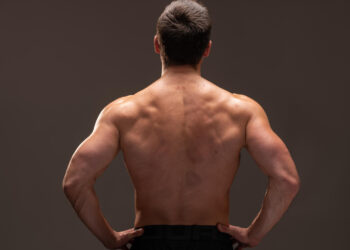
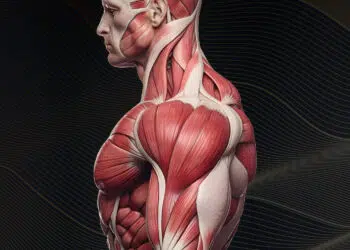
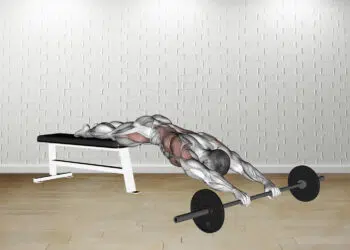
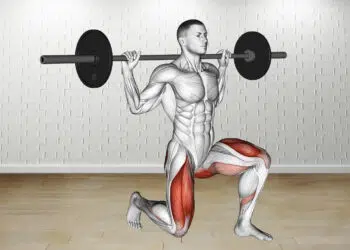
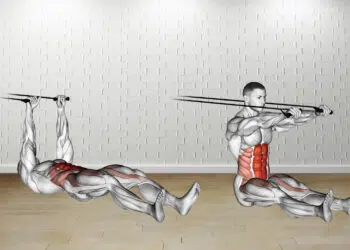
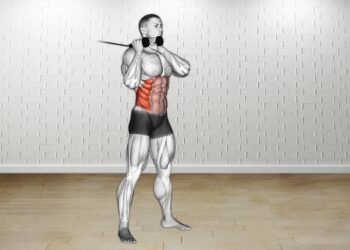

Interesting